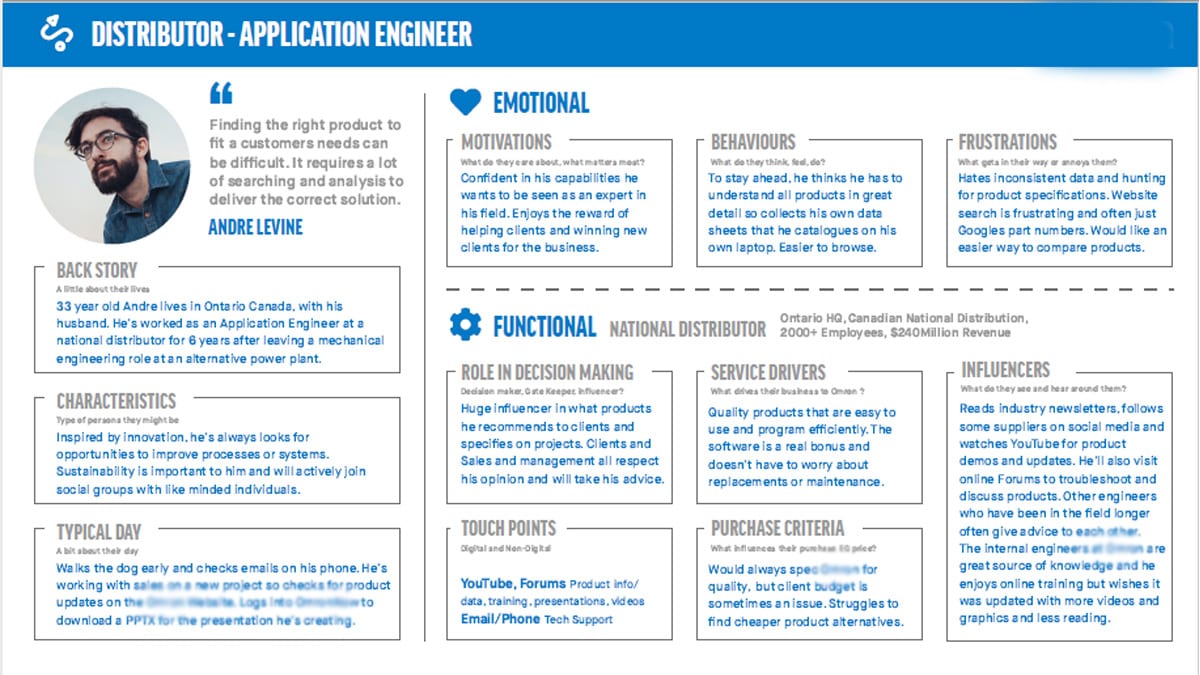How to tackle complex B2B customer journey mapping

Pro tip: There is a misconception of cold, transactional interactions in the B2B world but throughout research, we observe a lot of close personal relationships. Business success is linked to customer success, so trust leads to a more productive business. Knowing your customers in a digital world can be an issue when people become numbers to a business. At the end of the day people buy into people, adding heart and personality into the process builds a human connection.
When relationships run deep and employees turnover, the partnership can become much more transactional. Avoid this by having sales associates regularly log customer experiences and their touchpoints, digitally marking in-person meetings, social events, instant messaging platforms, emails, and calls. To get an overall satisfaction score, separate rankings for products and services to pinpoint where shortcomings may be arising.
#3 Journey mapping brings all of the insights together
Create a separate map for each main user group organised by their customer flow, starting with awareness and advancing through to loyalty. At each step give the persona a score. By comparing these maps, the business can easily view what customer groups thought of various aspects of the brand experience and how their responses coincide with each other. If one area has low scores across all customer types, such as the purchasing journey, you know that’s a critical area to change. Identifying overlapping problems and key areas for improvement is the biggest deliverable in B2B customer journey mapping.
It’s not enough to just highlight these areas for improvement, it’s also important to prioritise these learnings. Run another workshop with the business to plot each of these opportunities into sections, using a matrix to compare the ‘impact on customer journeys’ vs ‘effort to implement.’ Add another layer to clarify internal action points, for example, categorise:
- Tactical improvements where people and processes are already in place and it’s just a matter of getting the change off the ground running. These could be related to digital advertising or repurposing digital products that the company already owns.
- Operational changes require revamping internal processes or behaviours first before they can have a knock-on effect on the customer. For example, moving offline procedures online.
- Strategic ideas benefit the business and the customer in the long run. With large, international organisations this may require sign off from head office and new infrastructure that could be game-changing and grow market share.
Keep in mind some improvements, regardless of their category, will need to be complete before another can start. For instance updating product categorisation, descriptions, FAQs and help guides will need to run before personalisation can take full effect. After all of these opportunities have been allocated, collaboratively create a timeline that essentially solves all of the issues in the background and incrementally increases sales and customer satisfaction.
Continue to work with the client and their technology partners to bring solutions to fruition, ensuring the products delivered are in line with customer expectations.
Mapping the entire OMRON customer experience
DEPT® teamed up with Omron, a multinational manufacturer of automation components, equipment and systems, to conduct its largest customer research project to date. With the vision of becoming more customer-centric and digitally-enabled, the business was aiming to create a seamless cross-channel experience that drives market share growth. After gaining a deep understanding of how Omron operates, DEPT® led a phase of in-depth customer research. This involved analysing Omron’s technical estate, on and offline touchpoints, and speaking with people across all levels of the business from C-suite and director to inside and outside sales, as well as upwards of 130 customers.
More than 3,000 quantitative and qualitative insights were collected from internal teams, data analysis and customer search. We held 12 stakeholder workshops involving 45 people across the business from 12 departments. Our correspondence with customers produced over 30 hours of recorded video interviews and thousands of direct messages.
With this information, we created 8 new personas that fit into three key customer types: distributors, OEMs (Original equipment manufacturer) and system integrators, and end-users. DEPT® developed customer journey maps to help identify gaps and uncover opportunities relating to search solutions, product purchasing and customer care. A roadmap of improvements was created that would benefit the greatest number of customers. DEPT® is now continuing to work with Omron to bring these solutions forward.
Conclusion
The B2B buying journey is no longer a linear process. With an increasing amount of resources and choices available digitally, it’s become less predictable and fiercely competitive. Buyers are more educated and the sales process begins not with an introduction, but with an assessment of how much the prospect already knows about you. Get ahead of the game by segmenting and drip-feeding relevant content at every stage.
Customer retention is no longer granted on legacy relationships alone. This new generation of digital-native buyers rewards innovative product improvement and unparalleled customer service with loyalty. And if you’re lagging behind the industry, they’re quick to jump to a more advanced solution. Throughout our research, we often hear purchasing and returning items should be a one-click-process, as seamless as Amazon, yet tends to involve several steps on and offline. Merging B2B and B2C customer experience has quickly become industry standard, and sets the groundwork for businesses looking to launch into new markets.
Customer journey mapping is the first step to better understanding your customers. Complex international organisations, in particular, can easily lose sight of the granular detail that’s having a big impact on end-users. Don’t let oversights hinder growth in the new digital reality. We’re here to help you get started; get in touch to discuss your business requirements.





